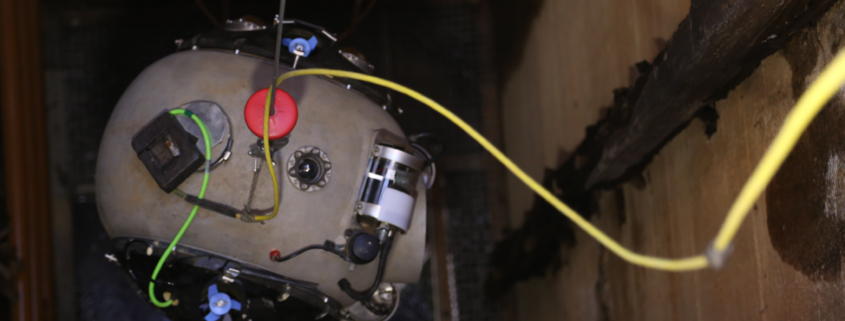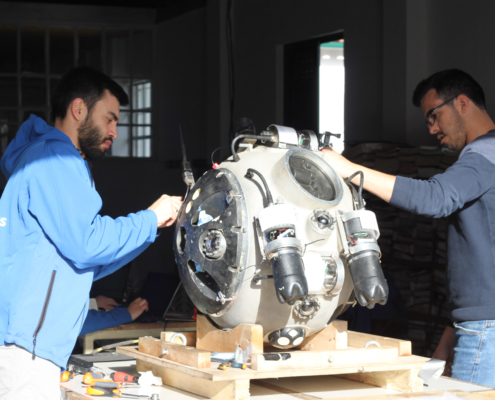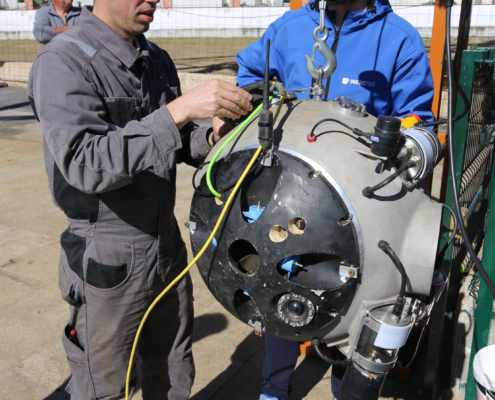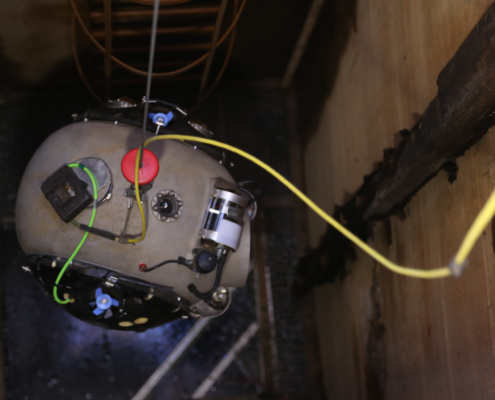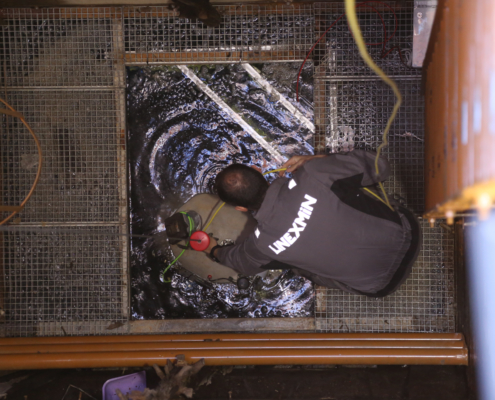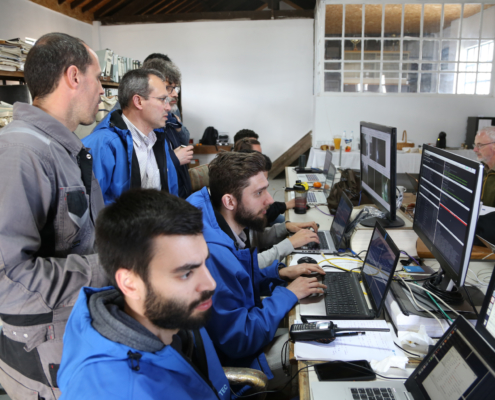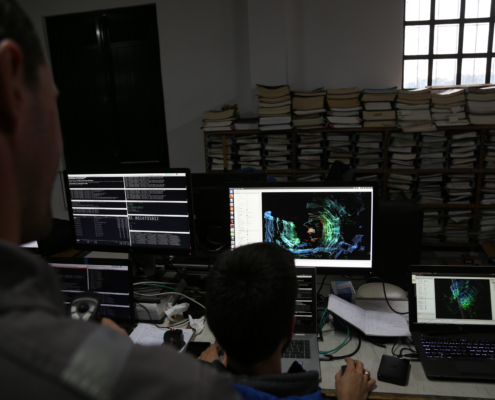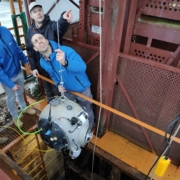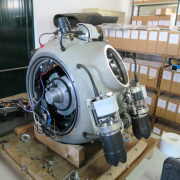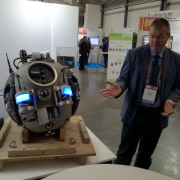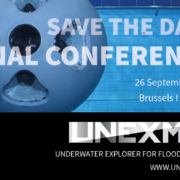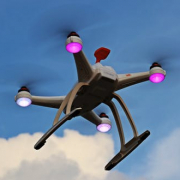First week of field work at the Urgeiriça mine, Portugal
The UNEXMIN team is currently testing its innovative exploration solution in Portugal, at the closed and flooded underground Urgeiriça mine. The Urgeiriça field trials are divided in two sets of testing, with a period of laboratory work in between at INESC TEC. The first part has just ended and the first results are coming in:
- 6th of March (Wednesday): The UNEXMIN team tested and packed the UX-1a robot and the needed equipment for the Urgeirica trials and travelled to the test site from Porto.
- 7th of March (Thursday): The setup of the control room, launch site and the necessary communications went quickly as the Urgeiriça mine site had the appropriate infrastructures already in place. The first dive of the UX-1a robot was done on the afternoon of this same day, right after the team had received the necessary safety instructions from the Health and Safety body. The water table was ca. 7 m below the surface level in the shaft where the robot dived.
- 9th of March (Saturday): The robot went down to 54m water depth (2nd level, 60m below surface level).
- 11th (Monday) to 14th of March (Thursday): The UX-1a robot explored the shaft down to 104m water depth (4th level, 110 m bsl.). The entrances of the first four levels were mapped (1st level is at 30 m, 2nd at60 m, 3rd at 85 m and the 4th at 110m, below sea level).
- The entrance chamber of the 1st level was partially collapsed, with lots of rocks, wood logs and metal pipes, so only a few metres were investigated not to risk the robot. The 2nd level is collapsed after few metres so it could not be searched. The 3rd level was in good condition, so this level was used in multiple test dives to test and develop the instruments. The visibility of the water in the mine was very good, and even with the sediment disturbed by the robot it sank quickly as it was in the sand-coarse size fraction. The whole surface of the shaft was covered with wood, except the horizontal levels. The granite wall with black veins at the entrance of the 3rd level was recorded by the multispectral camera also. The γ-ray counter of the UX-1b was separately tested down to the 2nd level, lowered down in a cable parallel to another developed underwater γ-ray counter for cross validation.
- 15th of March (Friday): The last dive was performed in the afternoon. After that, the control room and the site were partially disassembled until the second part of the field trials, from 1st of April onwards. The UNEXMIN team travelled back to Porto to INESC TEC’s laboratory and packed out the field equipment to continue testing and instrument calibration within the testing pool.
The first part of the Urgeiriça field trials went as expected: the UX-1a robot was further tested; instruments were working correctly; the robot as a whole performed its functions and managed to explore, map and gather information on some of the flooded areas of the Urgeiriça mine. These data will help the team to develop 3D maps and other visualisation tools of interest.
Now it is time for the team to proceed with the development of the UX-1b robot. This second robot, that will carry some other scientific equiment than its counterpart UX-1a, will be tested on the field during the second phase of the Urgeiriça field trials. It will collect some different data that will complement data gathered by UX-1a.
Back to the lab and then to the field again!
—
Follow @UNEXMIN on our social media channels to keep up with the most recent news on the Urgeiriça field trials: Facebook, Twitter and LinkedIn.

